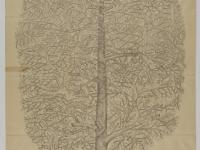October is Family History Month, which means it is a great time for students to begin thinking about their own family history and nationality as well as how their neighborhood has changed and progressed. A good place to begin with family history is to ask students to talk to family members about where they are from. Often students will realize things, even from their parents, they did not know previously.
Next, city directories, church records, or census records, can help students locate a specific family member. If you know the name of the individual as well as the spouse, it makes the process much easier and can lead to further findings. If students are able to find an address, it is important to look at the demographics of the neighborhood where their ancestors lived. For example, once they find an address, they can research who else lived in that area during that time period using ledgers or census records. Often, first generation immigrants banded together so by plotting where people lived it will be more obvious where pockets of different ethnicities were located. Even if students cannot find their own ancestors, tracing their roots through their nationality can help students understand their family history.
Once students are able to plot where their ancestors lived, they can draw up a brief narrative on their lives and the neighborhood. For example, did their ancestors come to the U.S. during the turn of the century or flee Europe before, during, or after a World War? Even students who are themselves immigrants, or first generation, can look into where their family came from and why. The Historical Society of Pennsylvania is the number one library for immigrant history so coming here to research can be a fantastic experience for students to find their roots.

